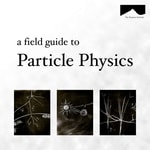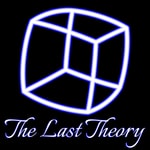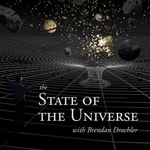The Field Guide to Particle Physics – Details, episodes & analysis
Podcast details
Technical and general information from the podcast's RSS feed.

The Field Guide to Particle Physics
Sean Downes
Frequency: 1 episode/9d. Total Eps: 49

Recent rankings
Latest chart positions across Apple Podcasts and Spotify rankings.
Apple Podcasts
🇨🇦 Canada - physics
02/08/2025#36🇬🇧 Great Britain - physics
02/08/2025#8🇩🇪 Germany - physics
02/08/2025#35🇺🇸 USA - physics
02/08/2025#23🇫🇷 France - physics
02/08/2025#49🇨🇦 Canada - physics
01/08/2025#30🇬🇧 Great Britain - physics
01/08/2025#6🇩🇪 Germany - physics
01/08/2025#29🇺🇸 USA - physics
01/08/2025#56🇫🇷 France - physics
01/08/2025#48
Spotify
No recent rankings available
Shared links between episodes and podcasts
Links found in episode descriptions and other podcasts that share them.
See all- https://pdg.lbl.gov/
49 shares
- https://pdg.lbl.gov
49 shares
RSS feed quality and score
Technical evaluation of the podcast's RSS feed quality and structure.
See allScore global : 68%
Publication history
Monthly episode publishing history over the past years.
The Reason for Antiparticles
Season 3 · Episode 8
mercredi 7 décembre 2022 • Duration 13:00
The Reason for Antiparticles.
The Field Guide to Particle Physics : Season 3. Episode 8.
https://pasayten.org/the-field-guide-to-particle-physics
©2022 The Pasayten Institute cc by-sa-4.0
The eBook
The Field Guide to Particle Physics eBook is now available! If you're looking to support the show, we've got some fun options for you here, or you could buy us a coffee!
References
The definitive resource for all data in particle physics is the Particle Data Group: https://pdg.lbl.gov. This episode also pays tribute to Richard Feynman’s 1986 Memorial Dirac Lecture.
Terrell-Penrose rotation can be viewed from a human perspective in at "A Slower Speed of Light" by MIT's GameLab. That demo also includes the relativistic doppler effect. Some other great videos by Ute Kraus and Corvin Zahn at spacetimetravel.org. See in particular their dice demo.
The Reason for Antiparticles.
Antimatter is uncommon, but it’s not exactly rare. Antiparticles - especially those generated by cosmic radiation - are all around us, all the time. But just what is it doing here?
Antimatter is just like Matter
In a lot of ways, antimatter behaves just like matter does. Quarks make up protons? Antiquarks make up antiprotons… and antineutrons, too!
Antiprotons and antielectrons - that is, positrons - combine to form antihydrogen atoms.
The Antihydrogen Laser PHysics Apparatus - the ALPHA Experiment at CERN - studies the spectroscopic properties of antihydrogen. That is, it uses photons to give a little extra energy boost to those positrons. As those positrons relax to their ground state, they emit distinct wavelengths of light.
Just like regular hydrogen atoms.
Photons, you see, are their own antiparticles. They interact with matter and antimatter in precisely the same way.
If there were any difference between hydrogen and antihydrogen - any difference in mass, spin or the magnitude of their electric charge - those wavelengths of emitted light would also be different. And the ALPHA experiment would be able to detect those differences.
But no such differences have been observed.
So again, what exactly is antimatter doing here in our physical reality?
Antimatter annihilates Matter
The one thing antimatter does *not* do is hang around.
Antimatter annihilates with ordinary matter. Electrons and positrons annihilate to form a pair of gamma rays, a pair of photons.
If the universe were balanced between matter and antimatter, we wouldn’t be here. Or… perhaps worse… we’d rapidly disintegrate into a bursts of gamma radiation as our particles and those antiparticle partners annihilated.
So if antimatter is so uncommon - why is it even here? What is the point, the reason for antimatter? Why does the universe need antimatter?
To understand that, we need to talk about time travel.
The Light Cone
Our reality has four dimensions. Three space and one time. Famously, Einstein’s special theory of relativity tell us that these four dimensions are related.
That relationship is nature’s conspiracy to make sure that nothing travels faster than the speed of light.
One way to think about how this works is time travel. Literally traveling through time.
When we are still, we are traveling forward, through time. When we spring up to go for a run, we’re still traveling through time, but we *rotate* our perceived motion through time into space.
This is a four-dimensional sort of rotation. Sometimes this is called a Terrell rotation. There are some stunning visualizations of Terrell rotation linked in the show notes.
The amount of Terrell rotation varies without speed. In a sense, we exchange some of our speed in the time direction to travel through space. The faster we go through space, the slower we go through time.
There is a limit to this kind of rotation. We cannot rotate our motion so deep into space that we travel backwards in time. The most we can do is cause time to stand almost still, which happens when we travel just shy of the speed of light.
Light of course always and only travels at the speed of light, in the absence of matter anyway. And because everything that must travel slower than light - everything that has mass - like protons, electrons, atoms and US - is subject to the ultimate cosmic constraint: the light cone.
To visualize this four-dimensional cone, think of a camera flash. It’s a sphere of light moving outwards from a point. The tip of the cone is us snapping the photo, and the vertical part of the cone corresponds to the dimension of time.
At any moment, our reality can be cut into two regions: inside or outside the light cone. All those points that light can touch - and those that it can’t. Inside the light cone represents everything we can possibly hope to effect later in time. Outside the light cone is outside of our agency to do so.
The light cone - in other words - represents the boundary of causality.
Because we cannot travel faster than the speed of light, any Terrell rotation we experience inside our light cone retains a positive flow of time - however slow.
But outside the light cone, that same rotation can cause our perception of time to reverse. Outside our light cone, if we are traveling fast enough, we can perceive time as flowing backwards.
It’s a fun thought exercise to figure out how we might perceive an event outside our own light cone - I’ll leave that one for you to figure out - but here’s a hint: “wait and see”.
If you’re curious, check out our instagram account in the coming days for the answer.
Time flowing backwards might seem terrible for cause an effect. It would literally reverse the two! But time flowing backwards outside our light cone - outside our sphere of influence - has no bearing on our physical reality. As long as our causal influence is restricted to inside the light cone, the observable universe makes sense.
Now let’s tie this back to particle physics. You’d see, the relationship between the world inside and outside the light cone is intimately related to the relationship between matter and antimatter.
The Feynman-Stückelberg Interpretation of Negative Energies
The celebrated Dirac equation - the mathematics which describes particles likethe electron - suggests that positrons are just electrons with negative energy. But what is negative energy? This interpretation was confusing for quite some time.
But energy you see is intimately related to time. As time is to space, energy is to motion through space. Energy, in other words, can be thought of as motion through time.
So an antiparticle with negative energy can be thought of as a particle with positive energy moving backwards though time.
In his 1986 lecture commemorating Dirac, Feynman - who is credited with formalizing this interpretation - gave a concise, technical and frankly satisfying explanation for this phen...
Bonus : The Perils of Science Communication
Season 3 · Episode 7
vendredi 4 novembre 2022 • Duration 15:40
Update! Best place to find associated references are linked in our substack essay:
This is an essay that we originally posted on our substack page:
https://pasayteninstitute.substack.com/p/the-perils-of-science-communication
A Bonus Episode for The Field Guide to Particle Physics : Season 3
https://pasayten.org/the-field-guide-to-particle-physics
©2022 The Pasayten Institute cc by-sa-4.0
The definitive resource for all data in particle physics is the Particle Data Group: https://pdg.lbl.gov.
The Pasayten Institute is on a mission to build and share physics knowledge, without barriers! Get in touch.
A History Lesson
In the film “Einstein’s Big Idea”, French Scientist Antoine Lavoisier is portrayed just as he discovers how to split water into oxygen and hydrogen gas, thereby realizing the conservation of mass in chemical reactions.
Lavoisier is generally credited with disproving the phlogiston theory of combustion and reframing Chemistry as a quantitive science.
This shift from the qualitative is emphasized in a specific scene where Lavoisier meets with an excited young man who is pitching his apparatus for observing heat. Lavoisier assertively dresses down the man for failing to meet the modern, quantitative standards of scientific experiment.
This man is later revealed to be a revolutionary, and Lavoisier’s final act of the film ends with an escort to the guillotine.
While dramatized, the message was clear:
Science needs popular support, and clear communication is not enough. We need to do more than educate. We need to build community with inspiration, excitement and respect for Science. We also need to share with folks how Science works1.
Respect for Science is a value we share as Scientists. But it’s not universal. Whether or not Science is morally entitled to respect is irrelevant. Without constantly striving to earn and refresh that respect from Society, it can be lost.
The Siren Call of the Outsider
Science Communication is a rapidly professionalizing field that encompasses a spectrum from dynamic professional speakers to university department media managers to science-minded journalists.
From journalists like Natalie Wolchover, to Professors like Tatiana Eurikhamova, there’s a lot of great work being done by people I admire.
The line between #SciComm and marketing is extremely thin, and unfortunately, the internet’s content treadmill incentives their confluence.
Journals and university departments alike publish heroic press-releases about recently accepted scientific publications by department staff as if they were breakthrough results. But more often than not, these results are merely slow, incremental progress.
How is anyone but a specialist supposed to understand the difference?
The SciComm ecosystem, in other words, is full of noise. Especially for the general audience.
Cutting through that noise is tough. But content editors have had a tool for this as long as humans have printed newspapers: headlines.
Here’s a recent one:
“No one in physics dares say so, but the race to invent new particles is pointless.
In private, many physicists admit they do not believe the particles they are paid to search for exist – they do it because their colleagues are doing it”Sabine Hossenfelder - the Guardian Opinion (26 Sept 2022)
As a lead generator, this headline and its subtitle are incredible. Given the current intellectual climate around distrusting experts, it hits all the high points: All these experts have no idea what they’re doing, there’s some structural conspiracy and they’re wasting your money.
Taken with the author’s antagonistic, “outsider” persona2, it's direct aim at an established field of study. It's a recipe for clicks, likes and angry shares.
Unfortunately, the piece willfully and violently mischaracterizes the current state of particle physics. It’s so flagrant - and so short - that it’s worth a read.
A Reading Guide to Hossenfelder’s Complaint
Here is a highlighted list of rhetorical and factual errors which both discredit the thesis of Hossenfelder’s piece and demonstrates its disservice to the endeavor of Science Communication.
Broadly, high energy or “particle” physics is the study of what constitutes matter and energy, as well as the forces that govern their dynamics. Like any good science, it involves the study of both what particles we see as well as how those forces work.
Hossenfelder’s piece begins with a collection of names of physical models at various stages of generality. As written, it conflates them with concrete models for actual, physical particles. Doing so betrays such a misunderstanding of how Particle Physics works in practice that it was almost certainly an editorial decision.
Let’s consider some examples.
The Sfermion
The sfermion is a very broad class of particle, a collective noun akin to saying “cats” or even “mammals”. They are particles associated to fundamental fermions - particles of matter like the electron, muon or up quark - by a general class of models related to the idea of Supersymmetry3. Whence the name s(uper)fermion.
The Magnetic Monopole
Magnetic monopoles are another broad class of particle. An electric monopole is a particle like an electron, proton or even an
Antimatter! : Season 3 Trailer
Season 3
vendredi 13 mai 2022 • Duration 01:38
The Field Guide to Particle Physics
https://pasayten.org/the-field-guide-to-particle-physics
©2021 The Pasayten Institute cc by-sa-4.0
The definitive resource for all data in particle physics is the Particle Data Group: https://pdg.lbl.gov.
The Pasayten Institute is on a mission to build and share physics knowledge, without barriers! Get in touch.
Introducing Season 3 : Antimatter!
I hope you enjoyed Season 2, and the bonus episodes on cosmic rays that followed shortly after.
This is just a short note to let you know that we’re still hard at work on developing Season 3, and the Season 3 will be all about ANTIMATTER.
We’ve mentioned antimatter in brief before, for example, how the positron and the electron can collide, annihilating each other to turn into a pair of photons.
In seasons one and two, antimatter was used for taxonomy; it was used to organize the particles we know.
This season, we’re going to dig much deeper. We’ll explore what it means for a particle to have an antiparticle partner.
Questions we’ll discuss include:
- Where does antimatter come from, and what’s with that name?
- Why is there so little of it in the universe?
- Does antimatter always annihilate matter?
- What does it mean to be your OWN antiparticle partner?
- Finally, what can we USE it for?
We’ll finish season 3 with what we DON’T YET know about antimatter. Like just who, exactly, is the antiparticle partner of the neutrino.
At the Pasayten Institute, antimatter fills our minds with wonder - and a little bit of terror. By the end of next season, we hope to fills yours with curiosity to explore more.
We’re excited to share these ideas - and a few stories - with you!
The Impact of Particle Physics on the Moon
Season 2
jeudi 21 avril 2022 • Duration 16:32
The Field Guide to Particle Physics
https://pasayten.org/the-field-guide-to-particle-physics
©2021 The Pasayten Institute cc by-sa-4.0
The definitive resource for all data in particle physics is the Particle Data Group: https://pdg.lbl.gov.
The Pasayten Institute is on a mission to build and share physics knowledge, without barriers! Get in touch.
The Primary reference for this piece on the Lunar Surface:
https://pubs.er.usgs.gov/publication/70034108
Dr. Jean-Philippe Combe's professional website at the PSI.
The asteroid 4-Vesta:
https://en.wikipedia.org/wiki/4_Vesta
A video on the basics of sputtering as applied to nanotechnology:
https://www.youtube.com/watch?v=GgD6G3B-2WU
A note on the creation of Lunar Soils
Micrometeorites - incident space rocks that are less than 1 millimeter in size, and discussed by Dr. Combe below - play a large role in the formation of lunar soils. They play the role grinding and melting rocks and minerals into a dusty material that set the stage for particles from the sun and deep space to impact.
Below is Dr Combe's full essay.
Interaction of the solar wind with the surface of the Moon
Planetary science contribution to the Paysayten Institute
by Jean-Philippe Combe, PhD, Winthrop, Washington State
Senior scientist at the Planetary Science Institute, Tucson, Arizona
April 1, 2022
The coming narration comes largely from one scientific article entitled “ Sources and physical
processes responsible for OH/H2O in the lunar soil as revealed by the Moon Mineralogy Mapper (M3).“
by Thomas. B. McCord, Lawrence. A. Taylor, Jean‐Philippe Combe, Georgiana Kramer, Carle M.
Pieters, Jessica M. Sunshine, and Roger N. Clark published in 2011 in the JOURNAL OF GEOPHYS ICAL RESEARCH PLANETS, VOL. 116.
The Solar Wind
The Solar Wind was postulated in the mid-19th century, as a flow of particles and energy (photons) traveling away from the Sun into the Solar System. The observations that led scientists to this theory were
- aurorae in the upper Earth’s atmosphere
- terrestrial magnetic storms
- their correlations with solar flares
- and comet’s tails always pointing away from the Sun .
The solar wind was first observed directly by the Soviet satellite Luna 1 in 1959 and verified by measurements from Luna 2, Luna 3 and Venera 1, and then it was observed by a U.S. spacecraft, Mariner 2, in 1962.
The solar wind is composed mostly of protons and electrons, with about 4% helium and smaller amounts of heavier element ions. The flux at the Earth is about four hundred thousand particles per square centimeter and per second, with average energy of around half of a kilo-electronvolt per atomic mass unit, and a flux energy half width between 300 and 1500 keV as measured in 2009 by the Indian lunar orbiter Chandrayaan‐1. For this energy range, protons (H+) have a penetration depth in the surface grains of 5 to 10 nm. The solar wind plasma is almost completely absorbed by the Moon’s illuminated surface. However, up to 20% of the impinging solar wind protons are reflected from the lunar surface back to space as neutral hydrogen atoms.
The solar wind impacts the lunar surface, and the resulting i nteraction depends largely on the nature of the lunar soil exposed to space at the molecular level. Most known minerals of the solar system are made of molecules that contain large amounts of oxygen, mostly in oxides. The lunar surface has two major types of terrains that can be distinguished with the naked eye: the bright ones are called the highlands, and the dark ones are called by the latin word mare, which means seas, although they are not made of water, but are instead made of volcanic rocks, with various types of minerals rich in iron oxides and magnesium oxides. The lunar soil surface consists in a layer of crushed rock, minerals, and glass called “regolith”.
On the Moon, regolith formation results from combination of all the physical and chemical factors that occur on airless bodies, and that is called space weathering . This is unlike the processes that occur on Earth, and that are largely driven by tectonic activity and erosion due to the water cycle and atmospheric circulation. On the Moon, the agents of space weathering include a wide range of types and sizes of impactors, such as meteorites, micrometeorites (<1 mm), solar wind particles, solar‐ ultraviolet photons and galactic cosmic rays.
Solarwindparticlesbombardtheexposedsurfacesoflunarsoilgrains,producinganamorphouslayer and effecting atoms, ions or molecules to be ejected from a lattice site in the target material; this process is called sputtering . Such ejected particles from the source material can be redeposited as a thin film on a surface. The sputtered particle can be charged, but is most often neutral. The sputtering energy is inherent to the solar wind velocity and particle mass. Protons (H+), which make ∼95% of solar wind particles, have an incident energy range of ∼300–1500 keV and average energy of ∼500 keV under normal solar wind velocities of 300–800 km/s. Heavier ions such as He+ and other heavy species, with greater incident energies, also play a significant role in the sputtering process . Sputtering of cations with the lowest crystalline binding energy occur preferentially, such as for magnesium.
Effects of the Solar Wind
Interaction of the lunar surface with solar wind particles occurs in a context where micrometeorite impacts locally melt the soil to form layers of amorphous glass at the surface of mineral grains, and agglutinates composed of small fragments of minerals in a matrix of glass. As a consequence, the solar wind is able to implant protons (H+) in a lunar soil that is rich in iron oxide FeO, by reducing the FeO component in the soil melt to metallic iron. As a result, in agglutinitic glass of soil grains, nanophase metallic iron particles are ubiquitous.
The texture and major element compositions of these thin, amorphous rinds on the surface of lunar soil grains is a testament to the process of vaporization and subsequent deposition of these silica‐rich patinas, with their myriads of nanophase iron particles.
UV Photons from the Sun
Now let’s talk about photons, and specifically about solar ultraviolet photons. This is a radiation that triggers the emission of electrons from the lunar dayside surface, which makes the surface charged several volts positive and leaves many dangling positive ions. The released photo -electrons move to the unlighted side of the Moon and into the solar wind plasma wake forme d by the Moon absorbing most of the solar wind. Some of these effects were observed by the Electron Reflectometer onboard the Lunar Prospector spacecraft, and they have stimulated the study of the electrical charging of objects on the Moon, such as astronauts. The photoejection of electrons is yet another effect that ...
Cosmic Rays : Part 4 : Paleoclimatology and Muons
Season 2
samedi 9 avril 2022 • Duration 16:47
The Field Guide to Particle Physics
https://pasayten.org/the-field-guide-to-particle-physics
©2021 The Pasayten Institute cc by-sa-4.0
The definitive resource for all data in particle physics is the Particle Data Group: https://pdg.lbl.gov.
The Pasayten Institute is on a mission to build and share physics knowledge, without barriers! Get in touch.
The Particle Data Group's write up on cosmic rays. See Figure 29.8 for a representation of the "ankle" feature in the spectrum.
https://pdg.lbl.gov/2019/reviews/rpp2019-rev-cosmic-rays.pdf
Another representation of the power laws can be found in Professor Peter Gorham's Coursework on Ultra High Energy Cosmic Rays: http://www2.hawaii.edu/~gorham/UHECR.html
Natalie Wolchover has written two great articles in Quanta on Cosmic Rays, both which talk about what might accelerate these particles.
The Particle That Broke a Cosmic Speed Limit and Cosmic Map of Ultrahigh-Energy Particles Points to Long-Hidden Treasures
Colussi & Hoffmann
In situ photolysis of deep ice core contaminants by Çerenkov radiation of cosmic origin
Gephysical Research Letters: https://doi.org/10.1029/2002GL016112
Guzmán, Colussi & Hoffmann
Photolysis of pyruvic acid in ice: Possible relevance to CO and CO2 ice core record anomalies
Atmospheres: https://doi.org/10.1029/2006JD007886
A quick primer on Cherenkov Radiation: https://www.radioactivity.eu.com/site/pages/Cherenkov_Effect.htm
Theme music "Sneaking Up on You" by the New Fools, licensed by Epidemic Sound.
Cosmic Rays
Part 4 - Paleoclimatology and Muons
Our atmosphere is one giant filter for cosmic rays. The sparse molecules near the top of our atmosphere begin the process of catching the energy of those energetic particles from space and transferring it into heat or muons. These cosmogenic muons that typically make it all the way down to the surface.
Near the surface, the atmosphere is a lot thicker, but it’s still just a collection of ballistic molecules bashing into each other at 1000 miles per hour. Some of those molecules hit us, and some hit the ground. We perceive these molecular impacts as air pressure.
By contrast, cosmogenic muons are moving through this mess at over 600 million miles per hour.
To those muons, the surface of the Earth is barely noticeable. They fly through a lot of things: hundreds of meters of rock, oceans, plants and animals before colliding or decaying. By contrast, those particles of atmospheric gas typically reflect off the surface of the Earth. Rocks just aren’t that permeable to most gas. As we explained in the ALPHA particle miniseries, helium gas generated from radioactive decay deep within the earth collects underground, trapped by rocks.
One thing gas can permeate is surface water.
Quite a bit of our atmospheric gases get dissolved into the ocean. Oxygen in the air allows the fish to breathe too, once dissolved into the water so it can be picked up by their gills. Increased carbon dioxide levels also imply more CO2 gets put under water.
When the water on Earth’s surface freezes, as it might do near the polar ice caps, it traps some of that dissolved gas with it.
This has been happening for millions of years, and until somewhat recently at least, that ice has been compounding. New ice forms above, pushing old ice down.
This has resulted in a LOT of ice.In Antarctica there are areas where the ice is over four kilometers deep! That’s miles of ice! Greenland also carries massive glaciers, two to three kilometers deep, built up in same fashion.
The gases trapped in that glacial ice is a frozen relic of an older atmosphere. The deeper the ice, the older the dissolved gases. As the mixture of molecules in our atmosphere changes over time, it sets down a record in the glacial ice. The deepest ice, millions of years old, can tell us what the atmosphere was like millions of years ago.
Extracting that ice is quite the scientific adventure!
This all easy to say in theory - but the practice of Science requires a lot of gory, technical detail. Different measurements from different samples of ice at different depths from different parts of the world need to be calibrated. Ice can form at different rates in different places under different conditions.
But, at least averaged over a given year or decade or so, the atmosphere should be well mixed. Huge weather patterns around the world mix the air, ensuring should be about the same.
And so the Scientific logic goes like this:
Assuming older ice is usually below the younger ice and the atmosphere is well mixed, then given any two ice sheets on earth, there should be a way compare them. The concentrations of different gases dissolved at different times should sequentially be the same. Like multi-colored stripes on a pole. The stripes may be different sizes, but they should be in the same order.
If we can find the same sequences in gas concentrations across different ice sheets then we can start to put together a history of the Earth’s atmosphere.
Near the turn of the 21st century, geophysicists were working on exactly this problem. They were trying to calibrate the gas concentrations trapped in ancient ice samples by comparing ice from Antarctica with Greenland. And things just weren’t adding up. The sequences didn’t align. The gas concentrations were just too different. There was some kind of missing variable in the data.
As it turned out, that variable involved cosmogenic muons.
The Speed of Sound and Light
To understand how muons resolved this Paleoclimatology puzzle, we need to go back to the source. The source of cosmic rays.
In episode two of this series we talked about Fermi Acceleration - the process by which electrically charged particles like protons get accelerated to outrageous velocities by SHOCKWAVES in astrophysical plasmas.
And shockwaves occur in glacial ice too.
To understand shockwaves, let’s think about sound waves.
Sound usually travels in the atmosphere like a wave. A wave of air pressure. Those atmospheric particles slam against each other in an organized and oscillating way, spreading out away from source.
The speed of those waves depends on the amount and types of molecules present, as well as the overall temperature of the atmospheric gas. The sound waves we experience travel at around 343 meters per second, which is about 767 miles per hour.
Here’s the thing, humans routinely fly supersonic jets that travel faster than that.
Supersonic jets - like fighter jets - travel faster than the speed of sound. They travel faster than noise they make. You can’t hear them coming until they’re already past you. And when you do finally hear them, it’s a tremendous noise.
It’s a s...
Cosmic Rays : Part 3 : Cosmogenic Muons and Special Relativity
Season 2
dimanche 3 avril 2022 • Duration 12:01
The Field Guide to Particle Physics
https://pasayten.org/the-field-guide-to-particle-physics
©2021 The Pasayten Institute cc by-sa-4.0
The definitive resource for all data in particle physics is the Particle Data Group: https://pdg.lbl.gov.
The Pasayten Institute is on a mission to build and share physics knowledge, without barriers! Get in touch.
The Particle Data Group's write up on cosmic rays. See Figure 29.8 for a representation of the "ankle" feature in the spectrum.
https://pdg.lbl.gov/2019/reviews/rpp2019-rev-cosmic-rays.pdf
Another representation of the power laws can be found in Professor Peter Gorham's Coursework on Ultra High Energy Cosmic Rays: http://www2.hawaii.edu/~gorham/UHECR.html
Natalie Wolchover has written two great articles in Quanta on Cosmic Rays, both which talk about what might accelerate these particles.
The Particle That Broke a Cosmic Speed Limit and Cosmic Map of Ultrahigh-Energy Particles Points to Long-Hidden Treasures
MIT's GameLab has a fun example of how Special Relativity works. See also Gamow's popular science book on Special Relativity.
CERN's DIY Cloud Chamber Design
Cloud Chamber without Dry Ice (see also references within)
Other References:
Measurement of muon flux as a function of elevation
ICRP Paper on Aviation and Radiation
Radiation Exposure During Commercial Airline Flights
Radiation from Air Travel as per the CDC
Calculate Your Radiation Dose (EPA)
Cosmic Rays
Part 3 - Cosmogenic Muons and Special Relativity
Muons - those heavy, unstable cousins of the electron - are all around us. All the time.
On average, every square centimeter of Earth sees a muon about once a minute. While that might not seem like a lot, if you consider your personal space. Say, about square meter around you - you know, 10 square feet . Over 160 muons pass through your personal space per second! Per second!
Those muons coming form the upper atmosphere. They are the debris left over from the constant bombardment Earth experiences from high energy cosmic rays.
If only there was a way to see them.
Do you remember when I said that a particle physicist will look for particles WHEREVER they can find them? Well, before weather balloons, before particle colliders, there were cloud chambers.
Cloud chambers are boxes full of super saturated vapor or some kind. Any little disturbance will cause that vapor to condense, as clouds do up in the sky.
High energy particles blasting through a cloud chamber leave tracks. Little clouds form around the path of the particle, just like the contrails of a jet flying through the sky.
The muon and the positron were both discovered this way!
Cloud chambers are fun because you can build them yourself at home! The main thing you need is a sustained temperature gradient and tiny bit of very pure isopropol alcohol.
We’ll link to two great examples of DIY cloud chamber designs in the show notes.
Building a cloud chamber at home is a great way to come face to face with the fact muons - the debris from cosmic rays - are passing through us all the time.
The Atmosphere as a Muon Filter
The magnetic field generated by the Earth’s core protects us from many incident particles from space. Especially all that plasma in the solar wind.
But those high energy cosmic rays blast straight through the magnetic field. It’s just not strong enough to contain them.
Our upper atmosphere is our next layer of defense. Cosmic rays collide with its molecules tens of miles above the Earth, creating a shower of debris that itself can be miles across.
In some sense, the atmosphere serves as a filter, converting all those particles like protons and pions into muons. Muons comprise the bulk of what we see down here at the surface.
Muons are unstable particles. They decay to electrons after about 2.2 microseconds. This means that while many muons make to the ground, not all of them do. The higher you are above sea level, the more muons you’re likely to see.
At 10,000 ft above sea level, this number can triple! Given that commercial airline flights typically occur above 40,000 ft, it’s important to realize that flying exposes you to more Cosmogenic Muons.
Fortunately for you frequent flyers, the extra does radiation exposure is still a very small amount of radiation exposure! The International Commission on Radiological Protection has well established professional limits to protect even commercial flight crews from exposure to all those cosmogenic muons.
Long Lived Muons
Despite the atmospheric filter, those Cosmogenic Muons are still traveling really, really fast. Like 99.9 percent of the speed of light fast. Muons moving that fast don’t behave like you’d expect. For one thing, they take far longer than they should to decay.
How do we know that?
As you might recall from their eponymous episode, muons only live for about 2.2 microseconds. That’s 2.2 millonths of a second. Even traveling near the speed of light, that’s simply not enough time to get from the upper atmosphere to anywhere near the surface of the Earth.
That’s a bit over 9 miles - or 15 kilometers. It takes light about 50 microseconds to travel that far.
Muons that make it to Earth, then, live over 22 times as long as they should.
Why that happens - what causes the muons to live so long - requires a small digression on the theory of relativity.
On Special Relativity
As they say, Nothing travels faster than the speed of light. Which is true, at least, in outer space and to some extent in the air around us. You see, it’s not so much that LIGHT is the fastest thing around. It’s that the universe itself has a maximum possible speed - a speed limit, if you like - which is just shy of 300 million meters per second.
When left to its own devices, light - or any particle with zero mass - travels at that speed.
That universal speed limit is just a fact of life, but we don’t notice is much because a typical human moves at about 1 meter per second. Not 300 million meters per second.
But having a speed limit like the speed of light leads to some pretty strange paradoxes.
For example: you cannot race a photon. Photons, you might recall, are particles of light.
If you ran towards a photon, the photon sill still move away from you at the speed of light.
If you drove towards the photon at 100 miles and hour, the photon will still move away from you at the speed of ...
Cosmic Rays : Part 2 : Plasma Physics
Season 2
vendredi 25 mars 2022 • Duration 13:16
The Field Guide to Particle Physics
https://pasayten.org/the-field-guide-to-particle-physics
©2021 The Pasayten Institute cc by-sa-4.0
The definitive resource for all data in particle physics is the Particle Data Group: https://pdg.lbl.gov.
The Pasayten Institute is on a mission to build and share physics knowledge, without barriers! Get in touch.
The Particle Data Group's write up on cosmic rays. See Figure 29.8 for a representation of the "ankle" feature in the spectrum.
https://pdg.lbl.gov/2019/reviews/rpp2019-rev-cosmic-rays.pdf
Another representation of the power laws can be found in Professor Peter Gorham's Coursework on Ultra High Energy Cosmic Rays: http://www2.hawaii.edu/~gorham/UHECR.html
Natalie Wolchover has written two great articles in Quanta on Cosmic Rays, both which talk about what might accelerate these particles.
The Particle That Broke a Cosmic Speed Limit and Cosmic Map of Ultrahigh-Energy Particles Points to Long-Hidden Treasures
Cosmic Rays
Part 2 - Plasma Physics
What might you say is the most insightful law in theoretical physics? E = mc2? The general theory of relativity? The quantum nature of the atom? The debates could rage for days. Looking back on my own education, I’d isolate two really important ones.
The first is Newton’s FIRST LAW of motion:
A body at rest will stay at rest or a body moving in a straight line with a constant speed will not change in its motion unless acted upon by a force.
The second is probably Dalton’s Law of Multiple Proportions, otherwise interpreted as the modern theory of atoms. You know, that everything in nature is made of up individual molecules and those molecules are made up of atoms.
These ideas run counter to much of our direct, daily experience. At least that kind of experience we’ve had in common with our ancestors for thousands of years.
So please don’t ask me to pick between the two. Both Newton and Dalton’s laws are crucial.
Putting those ideas together - which involves a lot of mathematical work - physicists arrived at the modern, kinetic theory of gases.
There are LOTS of details and lots of implications, but one way to understand it goes like this:
Gases - like the air we breathe - is made up of molecules and those molecules move at different speeds. Their average speed tells us the temperature. The higher the temperature, the higher the average speed. But also - and importantly - the higher the temperature the wider the spread on molecular velocities.
In other words, all around you there are gazillions of tiny molecules. At room temperature, they’re moving at 1000 miles per hour, on average. Of course, some are moving really very slowly, and some are moving quite fast. A tiny fraction of those molecules are moving, really, really quickly, more than twice as fast as average.
But we can’t see any of it because they’re just too small.
Plasmas
When gases get really hot, the individual atoms inside the gas begin to break down. Their collisions have too much energy. The impacts are too powerful. The electrons and nuclei split apart and form separate components of the gas. Perhaps not surprisingly, this often - but not always - coincides with a very low density of atoms.
When a gas has its charged particles ripped apart, we call that gas a plasma. Plasma’s are kind of a BIG DEAL in astrophysics.
If you’ve stood around a bonfire, you’ve seen a plasma. Those tongues of fire are little pockets of air whose atoms have been ripped apart by the intense heat. The intense speeds of electrically charged particles zipping past each other is what causes those tongues of fire to give off electromagnetic radiation - otherwise known as light.
We discussed another sort of plasma in our last mini-series on the ALPHA particle, where we discussed the solar wind and the Earth’s magnetosphere. Of course, the outer bits of the sun itself are in a plasma, hence all the glowing we see every day. And that giant plasma ball we call our sun spits a constant stream of charged particles our way - the solar wind. The magnetic field generated by our Earth’s spinning core captures much of those charged particles well before they hit the Earth’s atmosphere. Thereby protecting both it and us.
Those particles are confined so the so-called Van Allen belts which hold the plasma - a very low density plasma compared to what you’d see in a bonfire - thousands of miles above the Earth’s surface.
Magnetic fields contain that solar wind by bending the trajectories of the individual particles - it curves their motion. That’s just what magnetic fields do. The strength of the magnetic field means that those particles can - at best - move in circles. The faster the particle, the bigger the circle. Approximately anyway.
Like any gas of particles, the van Allen belt plasma has particles moving at very low speeds and very high speeds. Very small circles and very large circles. The average speed - in part - determines the approximate size of those van Allen radiation belts.
Particles moving stupidly fast through a magnetic field - like cosmic rays from space - will also bend, but not enough to get trapped. Instead they fly through the magnetosphere and into the upper atmosphere. Breaking apart by spreading their energy around, leaving us to content with that debris of particles.
Plasmas in Space
You might wonder where those high energy particles from space - those cosmic rays - come from.
Well, there’s a lot of stars in space and subsequently a lot of plasmas. Stellar winds blow off particles all the time. But that’s not really enough energy to generate cosmic rays. But sometimes, when stars explode as supernovae, even more charged particles get ejected into space.
Those astrophysical gases - plasmas - often give us beautiful photographs to look at here on Earth. But don’t be fooled. The density of those gorgeous gas clouds - even in star forming reasons like the Horsehead Nebula - aren’t really that visible to the naked eye. Even if you were right up on it, you’d probably have to leave the camera shutter open for a bit to capture all that light.
That is to say, that astrophysical plasmas are pretty sparse. By comparison our atmosphere feels like a thick, pea soup. The particles inside those astrophysical plasmas don’t really smash into each other like they do down here on Earth. Rather, the particles interact via the longer range, electromagnetic force.
Astrophysicts will sometimes call them Colisionless plasmas to emphasize that fact. The gas behaves less like a game of billiards and more like… traffic… or a flock of birds.
Fermi Acceleration
In a diffuse, astrophysical plasma there are really three components to worry about. The electrons with negative charge, the ions with positive charge and the magnetic field itself.
The importance of the magnetic field can be felt even here in our solar system. Like the Earth, the sun has a magnetic field. A bit one. Unlike the Earth, the sun is constantly producing a large stream of energetic partic...
Cosmic Rays : Part 1 : Particles from Space
Season 2
vendredi 18 mars 2022 • Duration 10:03
The Field Guide to Particle Physics
https://pasayten.org/the-field-guide-to-particle-physics
©2021 The Pasayten Institute cc by-sa-4.0
The definitive resource for all data in particle physics is the Particle Data Group: https://pdg.lbl.gov.
The Pasayten Institute is on a mission to build and share physics knowledge, without barriers! Get in touch.
The Particle Data Group's write up on cosmic rays. See Figure 29.8 for a representation of the "ankle" feature in the spectrum.
https://pdg.lbl.gov/2019/reviews/rpp2019-rev-cosmic-rays.pdf
Another representation of the power laws can be found in Professor Peter Gorham's Coursework on Ultra High Energy Cosmic Rays: http://www2.hawaii.edu/~gorham/UHECR.html
Cosmic Rays
Part 1 - Particles from Space
Well before the gigantic particle accelerators like the Large Hadron Collider at CERN or the Tevatron at Fermilab, particle physics was studied with balloons.
Well. It still is. I don’t want to give an overly simplified take on the history of particle physics - but it’s fair to say that physicists will study high energy particles WHEREVER they can find them. And it just so happens that a large number of really high energy particles are constantly bombarding us from space.
In our prior series on the ALPHA PARTICLE, we learned about the solar wind and how the Earth’s magnetic field catches much of that ionizing radiation, which we occasionally see displayed as the Aurora.
Well. That magnetic field is no match for these cosmic rays, which come flying at us from deeper in space with much higher velocities than anything in the solar wind. These particles smash right though the magnetosphere and into the molecules of the upper atmosphere.
From our perspective on Earth, these cosmic rays appear as showers of debris left over from those high altitude collisions. But they’re happening all the time.
There’s so much debris out there that hundreds of particles - particles of that debris - have passed through you since you first hit play on this episode.
### Cosmic Rays
On the 15th of October, 1991, a particle with enormous energy entered our upper atmosphere.
A particle with this much energy had never been seen before on Earth. At least by humans. It had tens of millions of times more energy than anything produced at the Large Hadron Collider or FermiLab.
All told. It had the kinetic energy of a baseball moving at around 60 miles per hour. All Packed. Into. A single. Particle. And it was heading right for us.
The first thing it found upon arrival at Earth was the magnetic field. Traveling at such a high speed, it barely noticed the deflecting force and smashed through through into the atmosphere.
Even in the rarified air of our upper atmosphere, tens of kilometers above the Earth’s surface, there are plenty of molecules to go around. Way more than you’d find in outer space. And what do particles from space with a lot of energy do when suddenly surrounded by a bunch of molecules? They spend it.
That poor first molecule it encountered didn’t stand a chance. Whether it simply lost an electron or got completely blown apart is hard to say, but that incident cosmic ray quickly broke apart into a shower of particles high above the Earth.
Pions were certainly created, but with that much energy - 50ish Joules of energy - all kinds of particles - from Lambda Zero to Kaons to the Cascades and Sigma baryons - could have been present.
And all of them decayed as they usually do.
The resulting shower of decays grew wider and wider, until the final, resultant charged pions decayed into muons. And the neutral pions decayed into photons. And any high energy photons decayed into electron-positron pairs who would in turn radiate the rest of the energy away.
That final blast of radiation filled a circle kilometers wide that slammed into the US Army’s Dugway Proving ground in Utah desert and - as luck would have it - right into the detectors of a physics experiment.
The detectors measured resultant spray and were able to back-calculate the energy of the original, impinging particle from space.
This aptly-named Oh-my-god particle was far and away the highest energy particle ever detected. To date, it’s not entirely clear what could accelerate a particle to such outrageous speeds.
And the current candidates are, frankly, terrifying.
## The Power Law
In some respects, cosmic rays are kind of like earthquakes. There’s a lot more little ones than there are big ones. For earthquakes, big ones with lots of shaking - magnitude 7 or 8 - are, mercifully, fairly uncommon around the world. Small ones, like magnitude 1’s or 2’s happen almost every day.
Cosmic rays follow a similar law.
Cosmic rays with an energies around 1000 MeV arrive almost continuously, from every direction, where as cosmic rays with energies a million times that might strike near you a few times per year. Those ultra high energy cosmic rays, a bit like the oh my god particle, whose energies can be measured macroscopic units like Joules? They might strike your whole TOWN maybe once a year, if that.
As scientists would say, the frequency depends inversely on energy.
More precisely, the frequency is derived from a POWER LAW. A power law for cosmic rays implies that the relative likelihood of two events, with energy E1 and E2 is proportional to their ratio, raised to some exponent.
Power laws are simple enough to understand, but difficult to explain. Bigger cosmic rays are less common, sure. But what’s difficult to explain about a power laws is that little number. The scaling exponent. Where does it come from?
It’s a collective effect. All the things inside and outside our galaxy that throw cosmic rays at us contribute to that effect. Other stars and planets sometimes get in the way and capture some of them. Cosmic rays in interstellar space sometimes decay or interact en route, turning into other particles with somewhat lower energy, muddying things a bit. Magnetic fields in space - like the one surrounding our Earth - deflect cosmic rays ever so slightly.
It’s a bit like studying Earthquakes. There are just so many moving parts and we don’t know all the details.
## The Ankle
Despite all this complexity, the shape of the cosmic ray power law can tell us a LOT about the nature of cosmic rays.
For example.
At the highest end, for those particles coming in with the HIGHEST energies, the power law for cosmic rays actually changes a bit. It flattens out. It becomes slightly less sensitive to Energy.
Ultra high energy Cosmic Rays aficionados call this change the “ankle”.
The ankle represents a cut in the cosmic ray spectrum at about half a joule of kinetic energy. There’s a pretty good plot physicists who study these things have made. I’ll include links to a picture in the show notes.
It’s a small effect on a small fraction of the total number cosmic rays we see on Earth. But to astrophysicists who study these things, it says a lot.
Namely, this “kink” or “ankle” in the power law suggests a possible change in where those cosmic rays are coming form. The leading explanation is that those ultra high energy cosmic rays - those cosmic rays with kinetic energy greater than half a Joule or so - are coming from OUTSIDE our galaxy.
Which is just as well. Becau...
The Omega Baryon
Season 2 · Episode 9
vendredi 4 mars 2022 • Duration 06:44
The Field Guide to Particle Physics : Season 2
https://pasayten.org/the-field-guide-to-particle-physics
©2022 The Pasayten Institute cc by-sa-4.0
The definitive resource for all data in particle physics is the Particle Data Group: https://pdg.lbl.gov.
The Pasayten Institute is on a mission to build and share physics knowledge, without barriers! Get in touch.
Introduction
The Omega Baryon is the strangest particle we have encountered so far. It may also be the strangest particle known to Science, literally.
With a mass of 1672.4 MeV, the Omega Baryon is heavy. As well it should be. It is comprised of three, strange quarks. The three strange quarks gives the Omega an electric charge of three times minus one third, or minus one.
Those strange quarks also gives it the unusually long lifetime of about 8% of a nanosecond.
While short by our standards - even a bit shorter than some other strange particles - a solid fraction of a nanosecond is an enormous lifetime for a particle with such an enormous mass.
The Decay of Strange Quarks
As if on brand, this strangest of the strange particles lives for so long precisely because its made from only strange quarks. The strange quarks, you might recall, struggle to decay. They wouldn’t decay- actually - if not for a mild identity crisis.
The strange quarks talk to other particles both by photon, gluon and by W boson. That is, in addition to the electromagnetic force, strange quarks communicate via both the strong and weak nuclear forces. From the strong force’s perspective, strange quarks are distinct. Just like the up and down quarks. Nobody is confused, all that that subnuclear gu respects their identity as strange quarks.
The weak force hedges a bit. The W-boson in particular is a little confused on who is who, and from its perspective down and strange quarks are a little mixed. Just like North and West mean slightly different things to a compass or a cartographer, down and strange quarks appear slightly different to the strong and weak forces. They’re almost aligned, but not quite.
As a result, the strange quark decays by W boson as if it were a down quark. That decay is amplified by the strange quark’s heavy mass, but its still a small effect. The weak nuclear force is… well… weak.
Being made of three strange quarks, the Omega baryon decays once one of its constituents does.
Omega Baryon Decay Channels
The Omega minus decays when one of its strange quarks throws out a W boson, changing its identity to an up quark. Typically the W-boson then decays to a pair of quarks itself, an antiup and a down quark. This all happens quickly inside the baryon itself, which subsequently explodes into a pair or triplet of particles. There there are a number of possible results.
Two-thirds of the time, that anti-up quark SCORES and runs away with one of the Omega’s other strange quarks, creating one of those tricky K minus mesons that we’ve discussed previously. What’s left over? An up, a down and a strange quark, which manifests as a Lambda zero baryon.
Twenty-three percent of the time, that anti-up quark isn’t so lucky. It remains stuck so the down quark that came from W boson, which together run away as a negatively charged pion. The quarks that remain - two strange and an up - comprise the neutral cascade or Xi baryon, which of course leads to its own cascade of particle decays.
Almost all the rest of the time - that’s about 8% for you bean counters out there - the Omega baryon spits out a neutral pion, decaying to a Xi minus instead. For this to happen, that down quark has to hold on tight to that pair of strange quarks that didn’t decay.
On extremely rare occasions, instead of a neutral pion, the Omega decays to Xi minus by spitting out a pi+ pi- pair. This could happen, for instance, the resulting up and antiup quarks happened to find a down-anti down pair inside the subnuclear goo.
Spin and the Decuplet
In addition to having three strange quarks, the Omega baryon also has three times the angular momentum of most baryons we’ve encountered so far. Inside the baryon, those three strange quarks are all zooming around each other, extra fast.
We’ve seen this behavior before, when we looked into the Delta baryons. The Delta Plus Plus baryon, you might remember had three up quarks. And the Delta Minus baryons, which had three down quarks.
In a sense, the Omega baryon is the strange version of those beasts. Because of that simple, three strange quark arrangement, the Omega baryon was predicted to exist well before it was found.
Well, that’s… not exactly right. In fact, it’s exactly backwards. Back in the 50s and early 60s nobody knew what a quark was, or how baryons were even organized. They just had all those wild names: Delta. Sigma. Xi. This zoo of strange particles was something of a mystery.
The physicist Gell-Mann (and, independently Ne'eman) chased the patterns of all the particles and their decays and divsed the quark model to fit those data. There was only one problem: one particle was missing.
The Omega baryon was discovered as a short stub of a line which appeared on a photographic plate at Brookhaven national Lab. It had essentially the same mass, spin and charge that Gell-Mann predicted, ushering in the first of many experimental verifications of the quark model of subnuclear physics.
And that concludes our second - STRANGE - season of the Field Guide to Particle Physics! We’ve got a few bonus episodes, stories and other extras in store, including a bonus series on Gell-Mann’s Eightfold Way and more details on how particles like the Down and Strange quarks mix. So please stay tuned and subscribe for more!
The Cascades
Season 2 · Episode 8
vendredi 25 février 2022 • Duration 06:20
The Field Guide to Particle Physics : Season 2
https://pasayten.org/the-field-guide-to-particle-physics
©2022 The Pasayten Institute cc by-sa-4.0
The definitive resource for all data in particle physics is the Particle Data Group: https://pdg.lbl.gov.
The Pasayten Institute is on a mission to build and share physics knowledge, without barriers! Get in touch.
The Cascade Particles
Prepare for trouble! And make it double! Today we confront the two Cascade or Xi /ksee/ baryons which each have a PAIR of strange quarks.
Xi minus checks in with a mass of about 1322 MeV, making it the heaviest baryon we’ve encountered so far. This is just as well, as it comprised of two of those heavier, strange quarks. Together with a third, down quark, it also has a total electric charge of minus 3 thirds or… minus one.
Xi 0 is just a little bit lighter with a mass of 13 hundred and 14 MeV. Its two strange quarks are paired with an up quark, which gives it an electric charge of twice minus one third PLUS one third, or… zero.
Decays of the Xi minus
Like many strange particles, the cascades take quite a while to decay. The Xi minus takes a solid fraction of a nano-second, the usual time it takes to convince one of those strange quarks to decay into an up quark. The result? The strange-strange-down bag of quarks converts to up-strange-down bag, otherwise known as the Lambda 0 baryon. As usual, that decay is accompanied by some other junk, and in this case the net result is a pi minus.
As we’ve already seen, the Lambda 0 and the pi minus are both unstable themselves. The former converts to either a proton or a neutron and the latter typically decays to a muon and then an electron.
If you tried to sketch that all out, you’d find a LONG decay chain of a LOT of different particles. This gives the cascades their name. Producing ONE Xi baryon results in a cascading SHOWER of particles all the way down to that familiar, stable stuff like protons, neutrons and electrons.
Now the Xi minus ALMOST ALWAYS decays to the Lambda 0 with a pi minus. Like 99.8 percent of the time! The rest of the time we find some cuter decays, each incredibly rare, happening less than a thousandth of a percent of the time.
These rarer decays shed some rather alarming light on the very identity of the strange quark. But BEFORE we get to that, we should talk about the Xi 0.
Decays of the Xi 0
The Xi 0 takes about TWICE as long as the Xi minus to decay, which is still, only a third of a nano-second. What’s short for humans is a seriously overripe old age for an elementary particle.
Like it’s partner, the Xi 0 decays into a Lambda0 with a pion. This time a neutral pion. This happens 99.5% of the time. These decays are a little twisted.
Its is the same thing we saw with those charged sigma baryons. We need to convince an a bag of of three quarks: up-strange-and-strange, to decay in something that looks like the up-down-strange bag of the Lambda zero. This is troublesome precisely because the strange quark ONLY EVER decays to an up quark.
As with decays of the Sigma baryons, things just need to rearrange a little bit. The Sigma Plus you might recall decays into a proton and a pi zero thanks to a W boson. Similarly, one strange quark of the Xi0 decays to an up quark by emitting a W- boson. The W- decays to a down-anti-upquark pair so fast the rest of the quarks barely notice. The down quark runs away with the other “up and strange” quarks from the original Xi 0, and the anti-up quark leaves with the freshly minted up quark as a neutral pion.
If that sounds convoluted, it is. It helps to have a diagram to look at, which you can do on our website, pasayten.org.
Incidentally, the other, rarer decays of the Xi zero match up quite nicely what you’d expect from those rare decays of the Xi minus. More on those in a later episode.
Spin Angular Momentum
The spin angular momentum of both Xi 0 and Xi minus is simply hbar over 2, just like the proton and the neutron. Well those and the three Sigma baryons AND the Lambda baryon.
That’s a total of eight distinct particles, which is a lot, but you can rest easy knowing there are NO other particles with that spin angular momentum made from combinations of those three quarks. And this is no accident.
Any OTHER, three particle combination of up, down and strange quarks - like a baryon with three of the same quarks, like the Delta Baryons we’ve already seen - will have a higher spin angular momentum.
You could think of that as if the quarks were orbiting each other inside that subnuclear goo at a faster and faster pace. And we’ll meet some examples of these soon enough.
The story behind WHY this should be is fascinating, nerdy and otherwise adds some useful scaffolding to an ever expanding ZOO of wild, subatomic particles.
More on that, next time.









